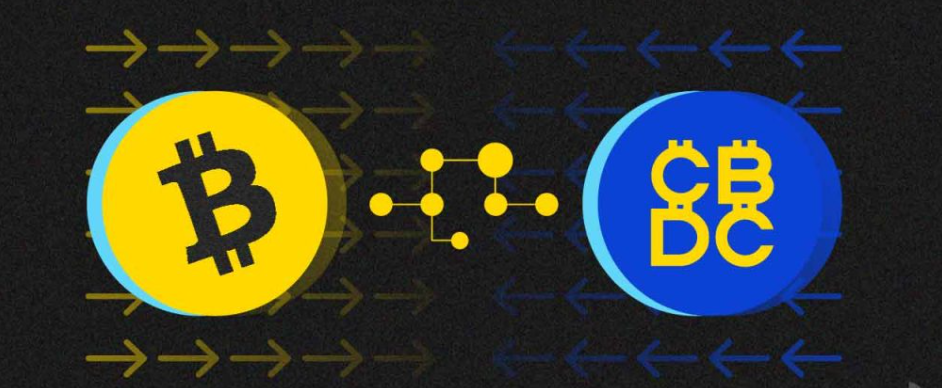Introduction
As digital currencies continue to evolve, two major contenders are shaping the future of finance: Central Bank Digital Currencies (CBDCs) and cryptocurrencies. While both aim to modernize payments and financial transactions, they differ significantly in their structure, control, and purpose. This blog explores how CBDCs and cryptocurrencies compare, their benefits and drawbacks, and what the future holds for digital finance.
What Are CBDCs?
Definition and Purpose
CBDCs are digital versions of a country’s fiat currency, issued and regulated by a central bank. Unlike cryptocurrencies, they are fully backed by the government, making them a stable and secure form of digital money.
Key Features of CBDCs:
- Government-backed stability: Eliminates volatility associated with cryptocurrencies.
- Centralized control: Managed by a country’s central bank.
- Financial inclusion: Provides access to banking services for unbanked populations.
- Enhanced security: Reduces fraud and money laundering through government oversight.
Examples of CBDCs:
- China’s Digital Yuan (e-CNY) – One of the most advanced CBDC projects.
- Europe’s Digital Euro – Expected to launch by 2026.
- India’s Digital Rupee – Under pilot testing.
- US Federal Reserve’s Digital Dollar – Still in the research phase.
What Are Cryptocurrencies?
Definition and Purpose
Cryptocurrencies are decentralized digital assets that use blockchain technology for secure, peer-to-peer transactions. Unlike CBDCs, they operate independently of central banks and governments.
Key Features of Cryptocurrencies:
- Decentralization: No single entity controls the currency.
- Anonymity & Privacy: Transactions can be more private than traditional banking.
- Volatility: Prices fluctuate based on market demand.
- Borderless Transactions: Used globally without exchange rate concerns.
Popular Cryptocurrencies:
- Bitcoin (BTC): The first and most well-known cryptocurrency.
- Ethereum (ETH): Known for smart contracts and decentralized applications (DApps).
- Ripple (XRP): Focused on cross-border payments.
- Stablecoins (USDT, USDC): Pegged to fiat currencies to reduce volatility.
CBDCs vs. Cryptocurrencies: A Comparison
| Feature | CBDCs | Cryptocurrencies |
|---|---|---|
| Control | Centralized by governments | Decentralized network |
| Stability | Stable, backed by fiat | Volatile, market-driven |
| Privacy | Limited, government oversight | High, depends on the coin |
| Usage | Everyday transactions, banking inclusion | Investment, payments, DeFi |
| Technology | Permissioned blockchain or centralized database | Public blockchain |
| Security | Government-regulated | Cryptography-based security |
The Future of Digital Finance: What’s Next?
1. Coexistence of CBDCs and Cryptos
Governments are unlikely to ban cryptocurrencies outright but may regulate them more strictly. CBDCs may serve as a government-controlled alternative to crypto for mainstream use.
2. Increased Regulation
Countries worldwide are implementing stricter regulations on crypto exchanges and transactions to prevent illicit activities while promoting CBDC adoption.
3. Integration with Financial Systems
CBDCs will likely be integrated into banking and payment systems, making them a seamless part of daily transactions, while cryptocurrencies will continue to evolve within decentralized finance (DeFi).
4. Growing Adoption of Hybrid Models
Stablecoins and regulated crypto assets might bridge the gap between CBDCs and cryptocurrencies, offering the best of both worlds.
Conclusion
CBDCs and cryptocurrencies represent two different visions for the future of digital finance. While CBDCs provide stability, security, and regulatory control, cryptocurrencies offer decentralization, privacy, and financial freedom. As regulations evolve and technology advances, the financial landscape will likely include a mix of both, shaping the future of money in the digital age.
Are CBDCs the future of money, or will cryptocurrencies continue to dominate? The answer may lie in how governments, businesses, and users adapt to these emerging technologies.
FAQs
1. Will CBDCs replace cryptocurrencies?
- Not necessarily. While CBDCs will become a mainstream payment option, cryptocurrencies will continue to thrive in DeFi, investment, and private transactions.
2. Are CBDCs safer than cryptocurrencies?
- CBDCs are backed by governments and offer stability, but cryptocurrencies provide privacy and decentralization, making them more attractive to certain users.
3. Can CBDCs be used for international transactions?
- Yes, but adoption varies by country. Some nations are testing cross-border CBDC payments.
4. How will regulations impact crypto in 2025?
- Expect stricter compliance rules, tax laws, and government oversight, especially for crypto exchanges and DeFi platforms.


































